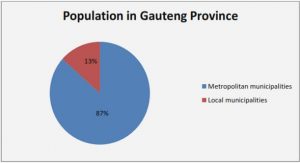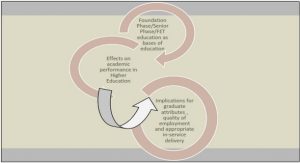Get Complete Project Material File(s) Now! »
Moment of insertion
My first in-depth encounter with a gay person was in July 2000. Francois, my hairdresser at the time, confronted me with the following question: “Am I going to hell because I am gay?” His question disrupted my perception about gays and caused disequilibrium in my mind. I believed the way to salvation and to heaven (Heyns 1988a:216) was to accept Jesus Christ as Saviour – something that Francois claimed he had done. According to the Christian doctrine on salvation (Disciple’s Study Bible 1988:1685; Berkhof 1941:269), as fruits of God’s redemption of sin, redeemed human beings were to repent from their sinful ways to become true followers of the Lord. At the time it was a practical problem for me, how Francois could deal with this « sin » of homosexuality. I started to contemplate the possibility that repentance from the « sin » of homosexuality would neither make him a better Christian nor change his sexual orientation. Berkhof (1941:231) regarded sin as a moral evil. I could not equate being homosexual with being immoral. Browning (1996:145) refers to R. Niebuhr’s idea of sin as unbelief and the loss of faith in the supportive providence of God. At that stage, I sensed that Francois’ homosexuality had nothing to do with sin, but I had no scientific ground to stand on. In an interview Jackson (2002:11) enquired about my viewpoint on the church’s claim that gays should convert themselves. My response was: “How do you convert yourself from the colour of your eyes?” Myers and Scanzoni (2006:57) affirmed this inherent nature of one’s sexual orientation. They shared the story of a gay Christian woman who compared the statement that she had chosen her sexual orientation to being told that she had chosen the colour of her eyes.
REFLECTION ON OUR STORIES
In this chapter I have described and interpreted the history of the development of both my gay story and that of the DRC. Interwoven with our stories is also the interpreted gay story of God. We have experienced many fusions of horizons (see 2.2.3). Winter (1997:27) regards the process of writing to involve clarifying and exploring ideas and interpretations. Therefore, writing up a report is an act of learning. « When we read what we have written, we find out what, in the end, we have learnt. » In reading what I have written in this chapter, I realized that both the DRC and I have come a long way in terms of socially constructing and re-authoring our dominant gay narratives. We have departed from a witnessing position of being unaware and disempowered. Through participation with gay Christians we have learnt about their fear of rejection, their painful stories, their hopes and dreams. The increased awareness has changed our perceptions about gay people. It becomes visible when I revisit not only my own participatory process, but also the participatory process of the DRC. Borrowing the term from Anderson and Goolishian (1988:378) we could name these processes our hermeneutic struggle to understand gay people. They consider conversation (language and communicative action) a part of the hermeneutic struggle to reach understanding with those with whom we are in contact. In this context it would refer to all the participants who enter into dialogue with one another. According to these two authors, understanding does not mean that we will ever understand each other completely. We only understand through dialogue what a person is saying within a particular context. This understanding never holds over time. Understanding is thus a process « on the way ». We only understand descriptions and explanations, but not events, because no understanding can ever exhaust all the meanings of events. Anderson and Goolishian (1988:380) refer to Hans Lipps who states that any linguistic account carries with it a “circle of the unexpressed”. This means that no communicative account, no word, is complete, clear and univocal. As such, when writing up the research, I bore in mind the tentative, incompleteness of understanding. This applies not only to the understanding of the phenomenon of homosexuality, especially gay relationships, but also the role which societal and religious discourse like dogma and prejudice play in participation with gays and in considering specific contexts of gay people. I understand dogma (meaning and insight) as that which forms the official belief system (Heyns 1988b:351), in this context of the DRC, which can only be changed once the paradigm (see1.6) has changed. Van Loggerenberg (2008:144-149) suggested a model which illustrates the inversed relationships amongst these four dimensions: dogma, prejudice, participation and context. It seems that where participation increases, gay prejudice decreases and vice versa. The more contact with gay people and the more their stories are heard, the less prejudiced people become towards them and the discrimination against them decreases. The more exposure to a person’s context, the less entanglement there seems to be in rules and regulations of dogma. As the shift in the direction of protagonism and inclusion increases, dogma becomes reduced to one single rule: Love.
CHAPTER 1: CONTEXTUALISING THE RESEARCH
1.1 Introduction
1.2 Background
1.3 Research Problem
1.4 Research Questions
1.5 Research Objective
1.6 Conceptual framework
1.7 Research approach
1.8 Research design
1.9 Limitations and scope
1.10 Ethical considerations
1.11 Research structure
CHAPTER 2: WHEN TWO STORIES MET – NO, THREE
2.1 Introduction
2.2 My personal gay story
2.3 The gay story of the DRC since 1986
2.4 Reflection on our stories
CHAPTER 3: THE RESOLUTION: INTERPRETATIONS, POSSIBLE DISCOURSES AND NARRATIVES OF DISCRIMINATION
3.1 Introduction
3.2 Eight points of the Resolution
3.3 Reflecting on possible discourses
3.4 Reflecting on the Resolution, its various interpretations and impact
CHAPTER 4: PERSPECTIVES ON CHRISTIAN TRADITIONS OF INTERPRETATIONS ON GAY RELATIONSHIPS AND GAY MARRIAGES: A PRACTICAL THEOLOGICAL DECONSTRUCTION 4.1 Introduction
4.2 Pre-modern times speak on gay relationships and gay unions/marriages
4.3 Same-sex unions in medieval Europe (500 CE – 1500 CE)
4.4 Modern times speak on gay relationships and gay unions/marriages
4.5 Post-modern times speak on gay relationships and gay unions/marriages
4.6 Reflecting on gay relationships and gay marriages
CHAPTER 5: A NARRATIVE EXPLORATION OF THE IMPACT OF THE RESOLUTION ON THE LIVED EXPERIENCES OF THE GAY MINISTERS AND CANDIDATE MINISTERS
5.1 Introduction
5.2 Inviting my co-researchers to participation
5.3 Conducting the interviews
5.4 Dominant themes/discourses amplifying the impact of the Resolution
5.5 Reflection on my retelling of their stories
5.6 Conclusion
CHAPTER 6: INTERDISCIPLINARY DIALOGUES
6.1 Introduction
6.2 A foundationalist or universal perspective
6.3 A nonfoundationalist or diverse perspective
6.4 A postfoundationalist or transversal perspective
6.5 The process of transversal reasoning
6.6 Conclusion
CHAPTER 7: INTERPRETATIONS AND REFLECTIONS ON THE RESEARCH JOURNEY
7.1 Introduction
7.2 Addressing the Research Questions
7.3 Validity of the research
7.4 Possible Contributions of the research
7.5 Recommendations for Further Research
7.6 Conclusion






